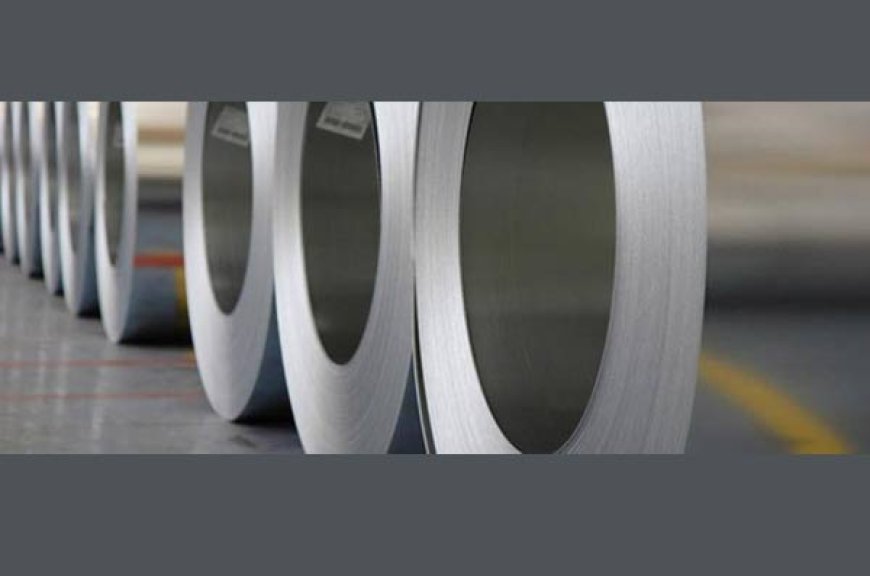Steel Demand Growth in Line with Expectations
India Ratings and Research (Ind-Ra) has published the December 2019 edition of its credit news digest on India’s steel sector. The report highlights the demand-supply scenario, price trends, imports/exports in both India and China, encompassing finished steel products (both flat

India Ratings and Research (Ind-Ra) has published the December 2019 edition of its credit news digest on India’s steel sector. The report highlights the demand-supply scenario, price trends, imports/exports in both India and China, encompassing finished steel products (both flat and long), scrap, iron ore, coking coal, and others, while also evaluating at the impact of end-user industries on India’s steel sector. The agency has also covered its recent rating actions.
Ind-Ra maintains its demand growth expectation at 4%, as reflected in its FY20 Mid-year Steel Outlook. In 9MFY20, demand growth has been at 3.5% and 4QFY20 is likely to showcase an improved demand scenario compared to the previous three quarters. The agency expects a limited downside to steel prices, notwithstanding the impact of coronavirus outbreak on the domestic steel sector which it continues to monitor. HRC prices (Delhi 2.5mm-8mm, IS2062) is around 6% higher in mid-January 2020 on a month-on-month (mom) basis and have inched up due to a revival in demand and cost-push. In line with the agency’s expectations, the gross spread per tonne within the hot-rolled coil segment has improved by 5.6% in mid-January 2020 on a mom basis and shall benefit steel players over 4QFY20.
Demand from the construction and infrastructure sector is picking up inline with the agency’s expectation and is reflected in the consumption of long steel products which were around 16% higher in December 2019 when compared with the average over 2019. The February 2020 budget would be monitorable to evaluate the thrust provides to steel demand growth. To meet the improved demand and mitigate the uncertainty over domestic iron ore availability with multiple mining licenses expiring by end-March 2020, steel players have increased production levels over 3QFY20 and this is likely to continue over 4QFY20.
The latest amendment to the Mines & Minerals (Development & Regulation) Act, 1957 which allows a deemed transfer of all statutory clearances for iron ore mines to the new lessees for a period of two years post license expiry on 31 March 2020 provides relief from the possible steel supply disruption due to iron ore unavailability which the agency had previously highlighted (March 2020 Mining Lease Expiry: Risk to Iron Ore Supply Contained; Prices May Inch-up). Iron ore prices are still likely to rise up to March 2020, as domestic steel players look to stock-up with pick-up in demand and add buffer stock in case of a minor disruption upon the transfer of mines.
Furthermore, the agency expects aggressive bidding for these mines, which would lead to a cost escalation for steel players and margin squeeze for merchant miners, as the winner may not be able to pass on the entire premium. The revised structure of the mining industry post the auction of mines to private players at premium and allocation to PSU merchant miners without a premium or to the owner of mines with valid license post-March 2002 will result in a different cost structure based on the sourcing of material by the end-user. In mid-January, iron ore prices (NMDC Limited, ‘IND AAA’/Stable; fines, Fe64%) were INR550/MT higher on a mom basis.
Coking coal prices remain highly volatile as expected by the agency, with prices (CNF India, Australia Premium HCC) around 5% higher in mid-January 2020 on a mom basis. A customs duty of 2.5% is levied on coking coal imports and given that India depends largely on coking coal imports to meet its requirement, domestic steel players have been advocating towards a revocation of import duties to be more cost-competitive.
From a global standpoint, China’s crude steel output increased by 7.4% year-on-year (YoY) in 2019. However, steel exports were lower by 7.8% YoY and can be attributed towards multiple reasons including the US-China trade war, better margins from the domestic market, production curbs to reduce emissions and Vietnamese importers preferring Indian-origin HRC. India’s exports of finished flat products increased in 2019 by around 67% YoY.
Hits: 109








